I heard that some new Jeep products were being released by a new company, Tough Stuff Products, Inc. Tough Stuff isn’t about making bumpers, rocker guards, or diff guards (there are already a lot of companies doing this). From what I have read on their web site, the folks at Tough Stuff are a “group of like-minded individuals who saw a need for some “common-sense”, high quality, reasonably priced products for the vehicle and firearm accessory markets”. With that in mind, I thought it would be worth trying a couple of their Paint Protectors on Lady. (After all, everyone knows that a lady likes to get something special every now and then.) I decided to try the door and fender protectors.
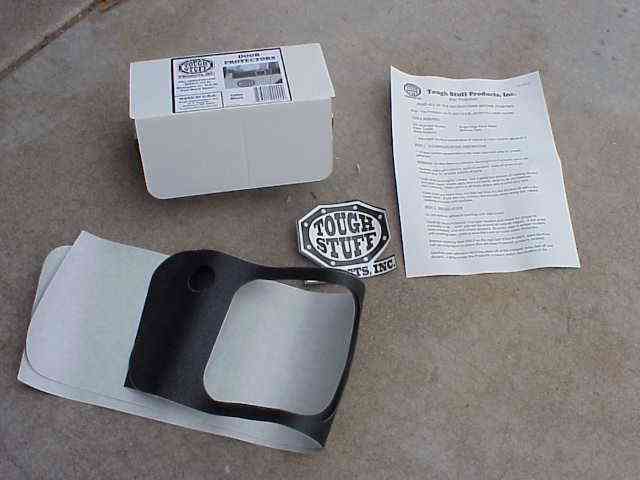
The protectors are are die-cut from abrasion resistant, O.E.M. quality, U.V. stabilized (non-fading/yellowing) textured vinyl with permanent acrylic adhesive. I’ve heard some folks claim they are made from “grip tape” but I can assure you this is not the case. My youngest boy went through the grip tape phase while growing up and this is nothing like that. I opened the door protector box and found the protectors, a bumper sticker, and the install instructions. The first thing that impressed me was the install instructions…..I could read them. Now I realize that may sound like a stupid comment, but then again, I am use to getting some of those worthless 87th generation Xerox copy install instructions from far too many vendors. So, right off the bat, I was impressed with Tough Stuff Products. Way to go!
I had e-mailed my buddy Scott the night before and mentioned I was doing some “low intensity wrenching” in the morning. I knew he was in need of a Jeep fix (he sold his TJ about two months ago) so when he replied that he had nothing going on, I told him to stop by a little after 7:00 if he wanted to help. (It is still hot here in Phoenix so summer time wrenching means you start early enough to finish up before it gets too warm outside.)
I read the install instructions completely because the first thing on the install instructions was a BIG statement that said to read all of the instructions before starting….so I did. Hmmm…..it says I need some 70% isopropyl alcohol. A quick trip to the bathroom cupboard yielded a bottle with about two teaspoons (kids!). Scott was pulling up as I returned to the garage so I bummed a ride to the grocery store and picked up a new bottle.
After returning with a new bottle of alcohol, I started wiping down the area where the door protector was to be installed. The instructions emphasize the importance of having a clean surface so that the adhesive will work as designed. After the requisite four cleanings, things were looking pretty good and the paper towel was no longer picking up any residue.
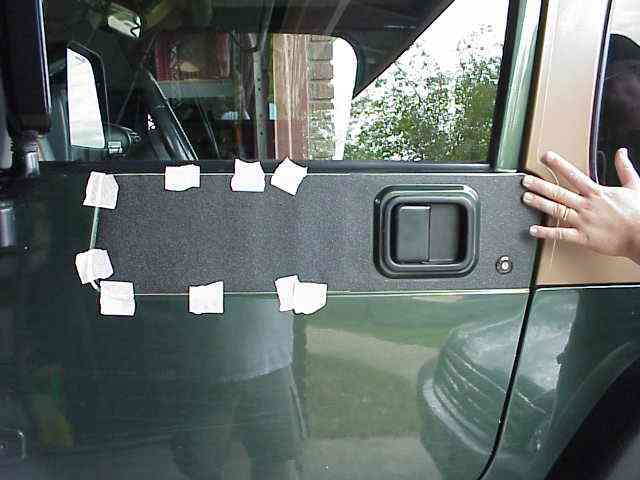
The protector was positioned over the door (DO NOT REMOVE THE BACKING MATERIAL) and we used the door lock as a reference, centering the protector over it. We taped the protector on to the door with masking tape. We stopped part way through the taping process and snapped the above picture. Make sure you align the protector properly when taping it down. You don’t want any gaps, wrinkles, etc. under the protector.
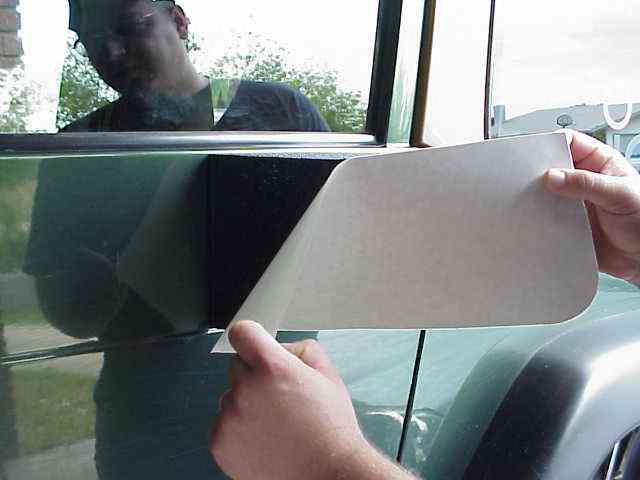
After the protector was taped down and we had double checked for a true fit, we remove the tape at the handle end of the protector. We then removed the adhesive backing material and carefully applied the protector to the door. Once the back half of the protector was done, we removed the remaining tape and back material and proceeded to apply the other end of the protector. You can see Scott peeling the last of the backing material off in the above picture. Again, be careful as you press the protector onto the door panel, being careful to keep it straight and free of air bubbles. For your info, we had no problems with any air bubbles forming under the protector material.
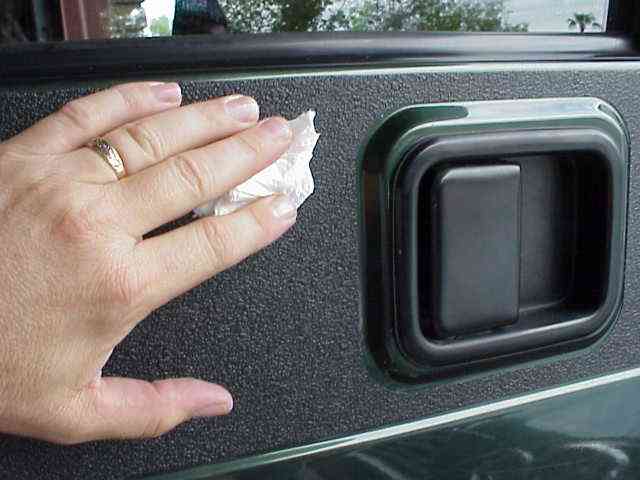
After the protector is in place, rub down the entire protector with a clean paper towel to ensure the adhesive is in full contact with the door. Take a minute or two and make sure you have all of the edges rubbed down well. The install instructions state that you should not direct pressure washer sprays at an angle around the edges for 10-14 days after installation. That won’t be a problem here since Lady got her quarterly wash down just this morning.
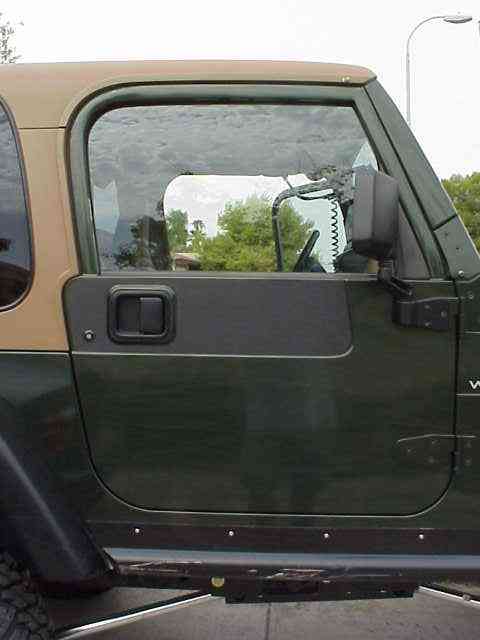
OK…so I forgot to take a picture of the door we were working on before we turned the Jeep around in the driveway and the sun was shining towards the camera at the wrong angle. So, here is a picture of the other door after we finished with it. Looks pretty good, in my opinion.
The door protectors went on without a hitch. There was no problems with air bubbles or fit of the protector. The install instructions were clearly written and easy to read. I was told that these have been on some test vehicles for a couple of years and there has been no problems with the adhesive letting go or with fading. Although I installed the black protectors, I also understand that it is available in a clear finish as well.
Tough Stuff Products Paint Protectors
With the door protectors behind us, we thought we would get adventurous and tackle the fender protectors. We felt pretty confident that we could manage this next install since we had breezed through the door protectors with not so much as a glitch in our process. Realizing that the fender install would require a wrench, we took a break and got something cold to drink (no use charging into part two in a dehydrated condition!).
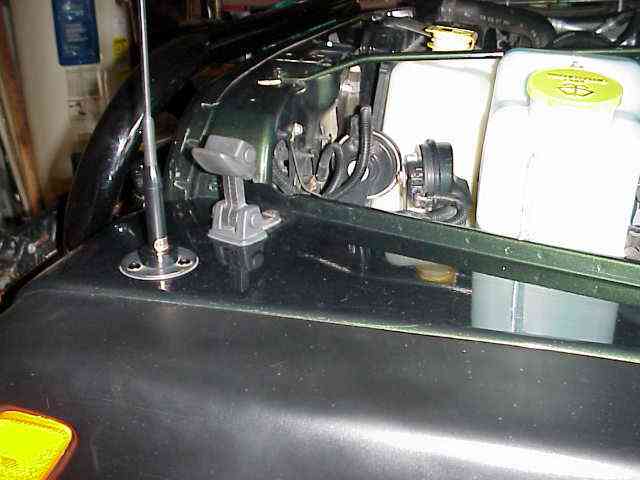
We opted to start on the more challenging fender since this one has my ham antenna mounted on it. I figured that if we could make it through this one, we would have no problem with the other side.
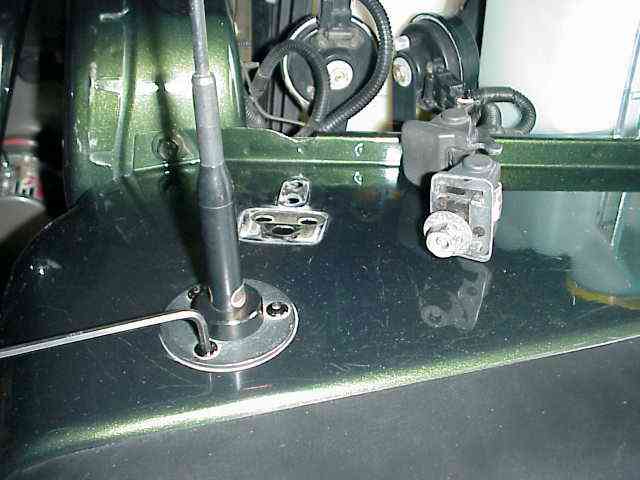
So, the first step in prepping this fender was to remove the hood latch and the antenna mount. I told Scott we were going to be doing some light duty wrenching and I held true to my word.
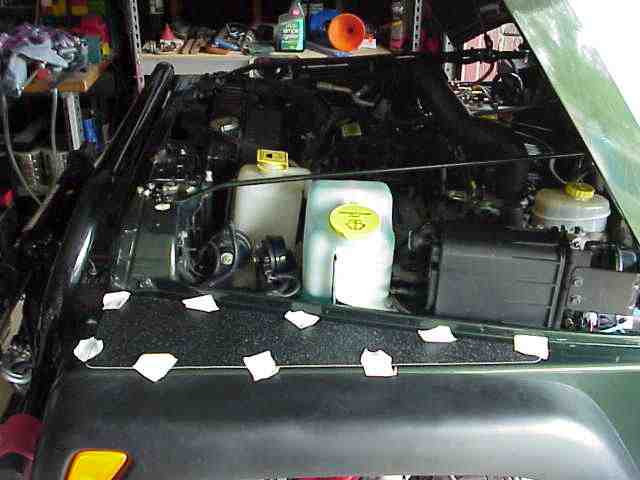
After the hood latch and antenna mount were removed, Scott did a full cleaning on the fender using the same method as was done on the door. Generous use of alcohol and clean paper towels yielded a clean surface in no time at all. We then taped the protector down as we did on the door. Take some time here and figure out where you want to place the protector. We closed and opened the hood a few times to make sure we were happy with the placement of the protector and its position in relationship to the hood.
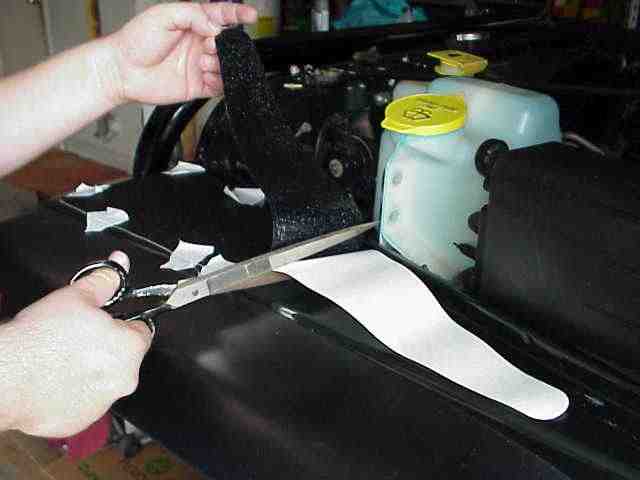
Once the protector was taped into position, we removed the tape at the rear of the protector and trimmed away the backing material. The protector was then pressed down onto the fender. Again, make sure you are not trapping any air under the protector material.
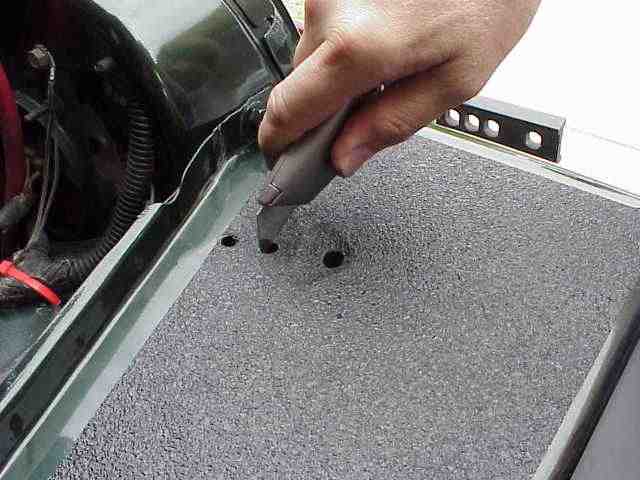
OK….so I confess that the hole trimming picture I took on the first fender didn’t turn out very well, so I’ve opted to use the hole trimming picture from the other fender. I used a box knife (razor blade) to carefully trim out the holes for the hood latch hardware. It was quite easy. Take your time and carefully trim the material out of the holes.

Part of the hood latch hardware includes a little rubber bumper that the edge of the hood rests on. Scott used an allen wrench to push the bumper’s mounting tabs back into their holes.

Here is the fender with the paint protector in place and hood latched down. I am thinking that I won’t be worrying so much about laying my tools on the fenders now that they are covered with the protectors. Yeah, I know Lady has a fair amount of Arizona pin-striping on her, but wrench gouges just isn’t the same. This is going to work out just fine! No doubt about it.
Given how well both of these installs went, I plan on doing the tail gate sill protector too. It should provide some degree of protection against the claws of my two pups that seem to think they have a standing reservation in the back of the TJ! I think the folks at Tough Stuff Products have developed a good product (thank heavens it wasn’t yet another 100 lb. bumper or an oil pan skid).
